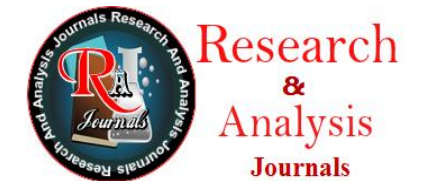Ultra-High-Performance Concrete with Local Materials as Overlay Reinforcement of Slab Structural
This research is an initial study on the strengthening of the existing normal reinforced concrete slab structure with Ultra-High-Performance-Concrete (UHPC) overlay using local materials without nano materials. The study began with the production of a UHPC mixture referring to a previous researcher, Meng (2017), with the type of SCM as a research variable. The cement used was OPC I, with the composition of SCM: silica fume content of 10%, 15%, and 20% with a fixed fly ash content of 15%. The maximum size used is the aggregate that passes the 4.75 mm sieve, is a combination of crushed stone (55%) and natural sand (45%). The ratio of water binder, w/b used is 0.22, superplasticizer content is 1% of the total weight of cementitious materials, and steel fiber content is 2% of the volume of concrete. Tests were carried out on the mechanical properties of UHPC. The results of the highest compressive test of the UHPC mixture, applied as an overlay on normal reinforced concrete slabs, became a hybrid composite structural element, which was then tested under flexural loads using the third point method. In addition to hybrid composite panels, a normal reinforcement concrete slabs were also made as a control specimen. The dimensions of the test specimens for the hybrid composite plate are 1000 mm x 400 mm x 60 mm and the thickness of the UHPC overlay is 20 mm thick. The test results show that the highest compressive strength of concrete was achieved by the mixture with the composition of SCM: 15% silica fume and 15% fly ash, which is 74.13 MPa at the age of 7 days; and at the age of 28 days obtained 65.17 MPa; thus, lower than the compressive strength of UHPC in general. However, the application of the highest performance concrete mix as overlays reinforcement for normal reinforced concrete slab has quite an effect on the hybrid composite slab. With the overlay, there is an increase in the flexural load capacity and ductility of the slab structure by 71%, and 166.22%, respectively. In addition, there is a difference in the stiffness behavior of the slab structure, in normal reinforced concrete structures, the stiffness would decrease after the first crack appears; however, in this hybrid composite structure, the stiffness will increase after the crack appears. The hybrid composite slab's crack pattern propagation behavior is also improved and distinct.
Klaus, B. & Horn, P. (1986). Robot Vision. Cambridge. MA: MIT Press (Example for books)
Stein, L. (1994). Random patterns, in Brake, J. S. (Ed.). Computers and You. New York: Wiley. pp. 55-70 (Example for a chapter in a book)
Bass, L., Clements, P. & Kazman, R. (2003). Software Architecture in Practice. 2nd ed. Reading, MA: Addison Wesley. [E-book] Available: Safari e-book (Example for e-books)
Mikac, N. & Branica, M. (1994). Complexation of trialkyllead with diethyldithiocarbonate. Electroanalysis, 6(2), pp. 34-39 (Example for a journal article)
Goodman, A. B., Badman, C. & Wiseman, D. (2000). Water conservation: The potential of rain harvesting. Journal of Environmental Issues, 24(2), pp.12-13. Retrieved August 23, 2007, from http://ibj.cbj.net (Example for a journal article online)
Kinchin, I. (2006). Developing PowerPoint handouts to support meaningful learning. British Journal of Educational Technology, 2(1). pp. 23-35. Retrieved August 23, 2007, from doi:10.1111/j.1467-8535.2006.00536.x (Example for a journal article with doi number)
Liu, L. & Miao, H. (2004). A specification-based approach to testing polymorphic attributes in Formal Methods and Software Engineering. Proceedings of the 6th International Conference on Formal Engineering Methods (ICFEM 2004). Seattle, WA. USA. November 8-12, 2004. pp. 306-19 (Example for a conference paper)
Riley, J. (2005, May 31). Call for a new look at skilled migrants. The Australian. p. 35 (Example for newspaper article)
Davis, J. H. & Cogdell, J. R. (1987). Calibration program for the 16-foot antenna. Elect. Eng. Res. Lab., Univ. Texas, Austin, Tech. Memo. NGL-006-69-3, Nov. 15, 1987 (Example for technical report)
Wilkinson, J. P. (1990). Nonlinear resonant circuit devices. U.S. Patent 3 624 125, July 16, 1990. (Example for a patent)
British Standards Institution (1987). Tongued and Grooved Software Flooring. London: BS 1297 (Example for a standard)
Abdullah, M. K. (1989). Modeling of Swirling Fluidized Bed Hydrodynamic Characteristics. Universiti Tun Hussein Onn Malaysia: Ph.D. Thesis (Example for a thesis)
Copyright (c) 2025 Mardiana Oesman, Sintia Aulia, Yulianti

This work is licensed under a Creative Commons Attribution 4.0 International License.
All Content should be original and unpublished.


